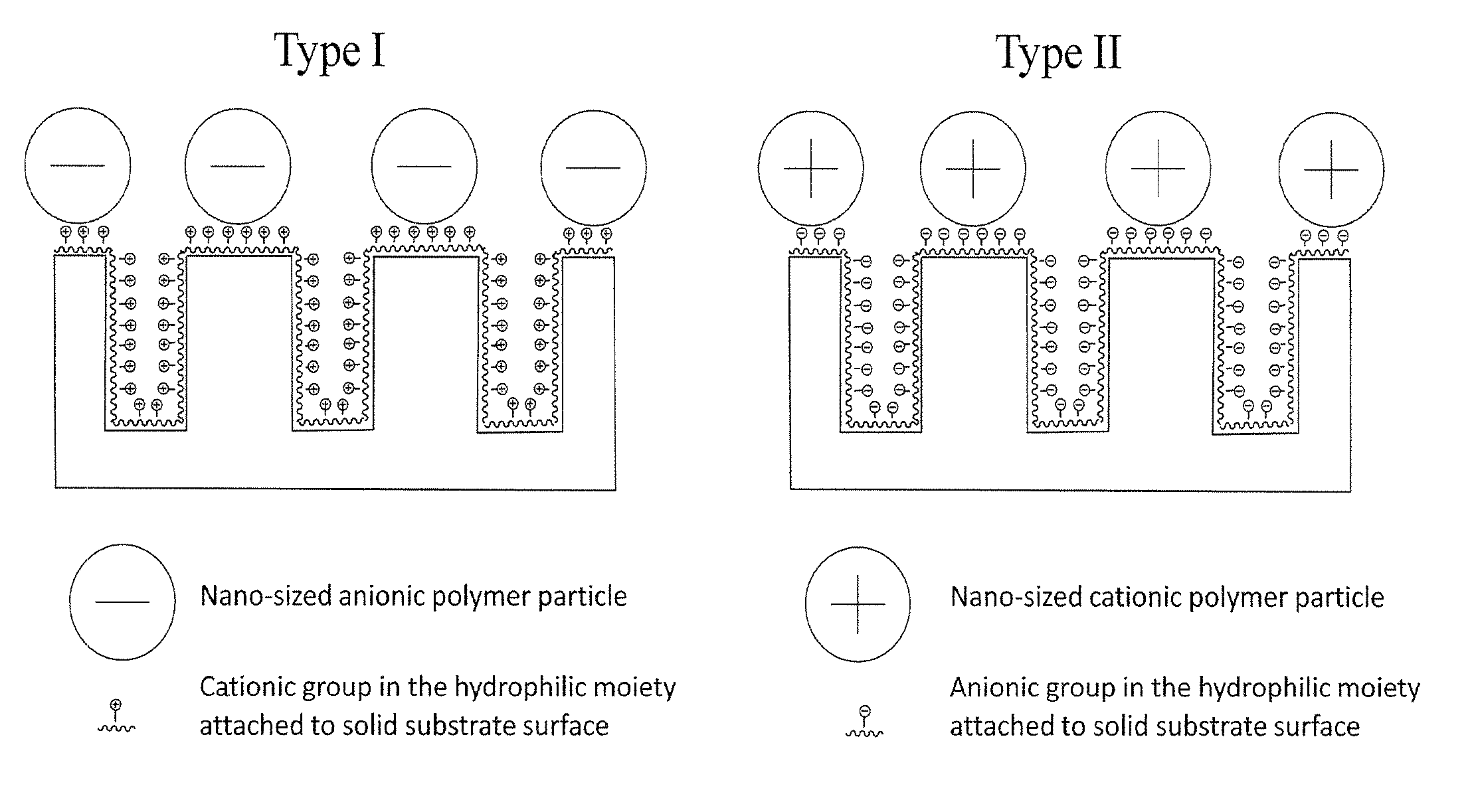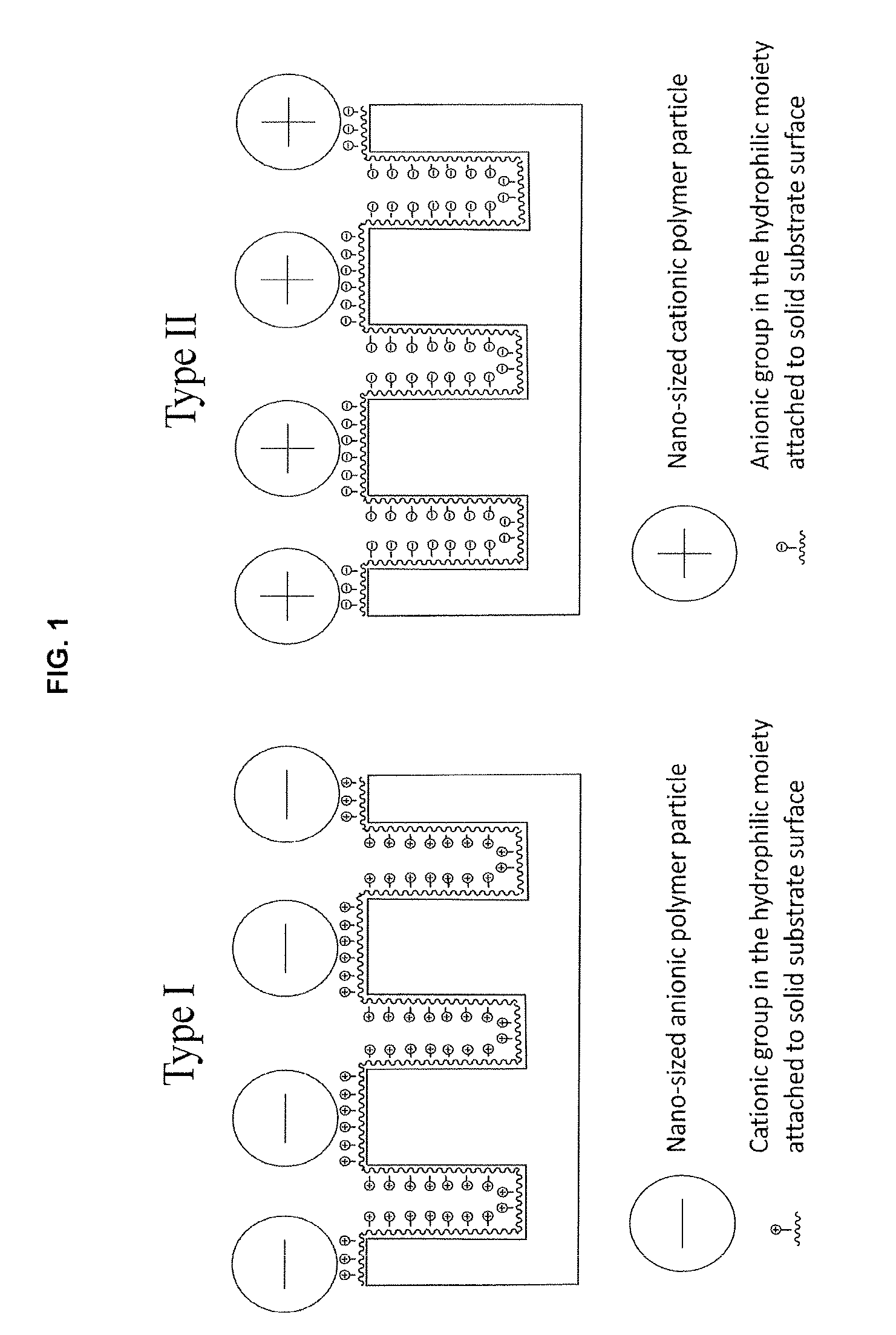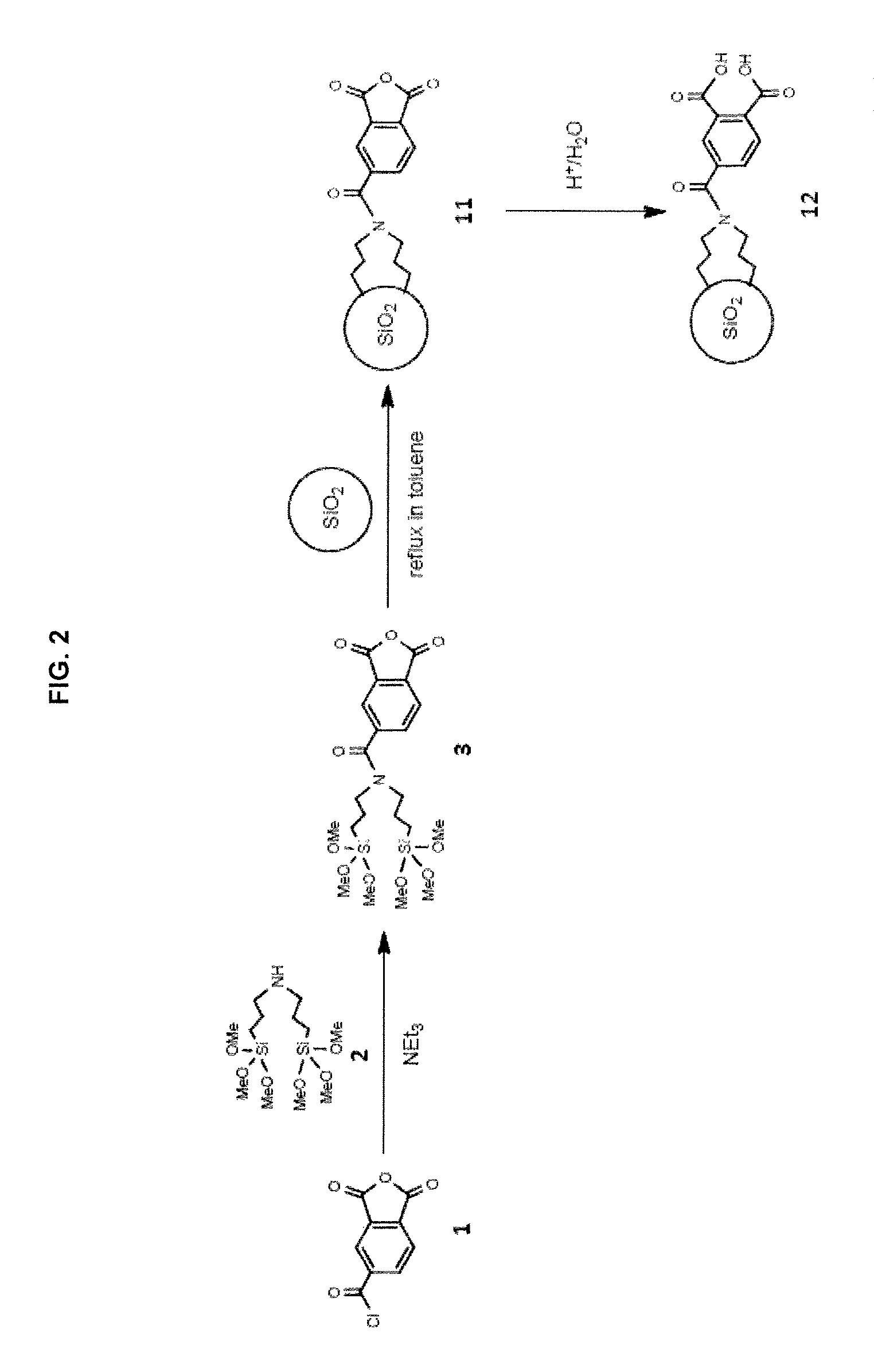HILIC/anion-exchange/cation-exchange multimodal media
a multi-modal media and anion exchange technology, applied in the field of anion exchange/cation exchange multi-modal media, can solve the problems of limited selectivity, failure to retain highly polar molecules, limited use in small-molecule separation, etc., and achieve the effect of easy synthesizing
- Summary
- Abstract
- Description
- Claims
- Application Information
AI Technical Summary
Benefits of technology
Problems solved by technology
Method used
Image
Examples
example 1
Preparation of Phase 12 (FIG. 2)
[0213]A solution of 11.58 g trimellitic anhydride chloride (1, Sigma-Aldrich) in 100 mL toluene (anhydrous) in a 500 mL was prepared in a round bottom flask, then the solution was cooled to 5° C. To this solution was slowly added a solution of 17.2 g bis(trimethoxysilylpropyl)amine (2, Gelest, Morrisville, Pa., U.S.A.), 10 mL triethylamine (10.0 mL) in 50 mL toluene with an addition funnel. After stirring at ambient temperature for 3 h, the reaction mixture was filtered off and the cake is washed with 10 mL toluene. The filtrate was then subjected to rotary evaporation under vacuum at 50° C. to give 25 g of silyl ligand 3 as a brownish viscous liquid.
[0214]25 g silyl ligand 3 and 50 g dried silica particles (particle size, 3 μm; pore size, 120 Å; surface area, 300 m2 / g) were mixed in 250 mL toluene. After carefully dispersing until uniformity, the reaction mixture was stirred and refluxed for 48 h. The functionalized silica particles were filtered off...
example 2
Preparation of Phase 15 (FIG. 3)
[0217]10 g Ureidopropyltrimethoxysilane (4, Gelest) and 2 g 3-aminopropyltrimethoxysilane (5, Gelest) were dispersed in 30 mL toluene (anhydrous) in a 250 mL round-bottom flask. 15 g raw silica gel (particle size, 3 μm; pore size, 120-Å; surface area, 300 m2 / g) was added to above mixture, then it was mixed until uniform with mechanical stirring. After being maintained under reflux for 48 h, the reaction mixture was filtered, and the cake was washed with acetonitrile and dried in a vacuum oven at ambient temperature for 20 h to give Phase 15.
example 3
Preparation of Phase 17 (FIG. 4)
[0218]10 g (3-Glycidoxypropryl)trimethoxysilane (6, Gelest) and 15 g raw silica gel (particle size, 5 μm; pore size, 120-Å; surface area, 300 m2 / g) were dispersed in 50 mL toluene (anhydrous) in a 250 mL round-bottom flask. After mixing until uniform with mechanical stirring, the reaction mixture was kept under reflux for 48 h. The reaction mixture was filtered and the filter cake was washed with acetonitrile and dried in vacuum oven at ambient temperature for 20 h to give Phase 16.
[0219]4.0 g trimethylamine (45% wt in water, Aldrich) was dissolved in 15 mL dioxane in a 40-mL glass vial. 2.0 g Phase 16 was added to the vial and sealed with a screw cap. The resulting mixture was mixed until uniform. The reaction mixture was kept at 50° C. with gentle tumbling for 40 min. The reaction mixture was filtered followed by washing the cake with methanol (50 mL), 0.1% phosphoric acid aqueous solution (100 mL), D.I. water (50 mL) and acetonitrile (50 mL) to giv...
PUM
| Property | Measurement | Unit |
|---|---|---|
| diameter | aaaaa | aaaaa |
| diameter | aaaaa | aaaaa |
| pH | aaaaa | aaaaa |
Abstract
Description
Claims
Application Information
 Login to View More
Login to View More - R&D
- Intellectual Property
- Life Sciences
- Materials
- Tech Scout
- Unparalleled Data Quality
- Higher Quality Content
- 60% Fewer Hallucinations
Browse by: Latest US Patents, China's latest patents, Technical Efficacy Thesaurus, Application Domain, Technology Topic, Popular Technical Reports.
© 2025 PatSnap. All rights reserved.Legal|Privacy policy|Modern Slavery Act Transparency Statement|Sitemap|About US| Contact US: help@patsnap.com



